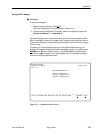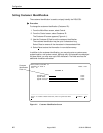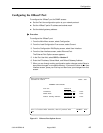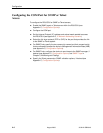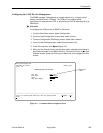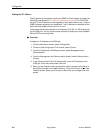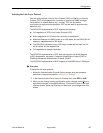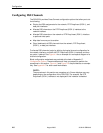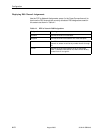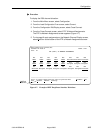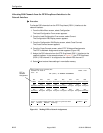
Configuration
4-7
3162-A2-GB20-40
August 2000
Selecting the Link Layer Protocol
Two link layer protocols, Point-to-Point Protocol (PPP) and Serial Line Internet
Protocol (SLIP), are supported for connection to an external SNMP manager,
Telnet device, or network device (e.g., a router). PPP can be used for
synchronous or asynchronous operation. SLIP can be used for asynchronous
operation only.
The DSU/CSU implementation of PPP supports the following:
H Full negotiation of PPP’s Link Control Protocol (LCP).
H Active negotiation of LCP when the connection is established.
H Maximum Request Unit (MRU) sizes up to 1500 bytes, but the DSU/CSU will
attempt to negotiate down to 500 bytes.
H The DSU/CSU provides a unique LCP magic number derived from the unit
serial number and the elapsed time.
H Full negotiation of escape characters.
The DSU/CSU implementation of PPP does not support Link Quality Reports
(LQR), compression, encryption, Password Authentication Protocol (PAP) or
Challenge Handshake Authentication Protocol (CHAP).
The DSU/CSU implementation of SLIP supports a fixed MRU size of 1006 bytes.
" Procedure
To select the link layer protocol:
1. Select the Communication Protocol Options screen using the procedure
described in the previous section, Setting the IP Address.
2. In the Communication Port’s Com Link Protocol field, enter PPP or SLIP.
3. When you are through making configuration option changes, select S
ave to
store these changes in nonvolatile memory. If you want to return to the User
Interface screen, press your Esc key and then save your changes from that
screen.



